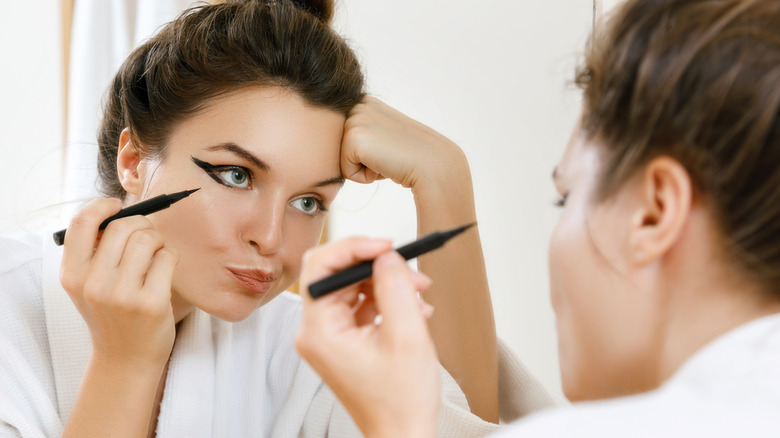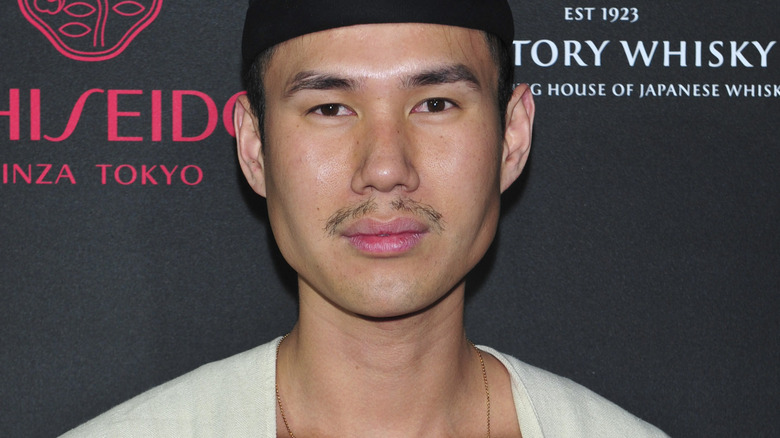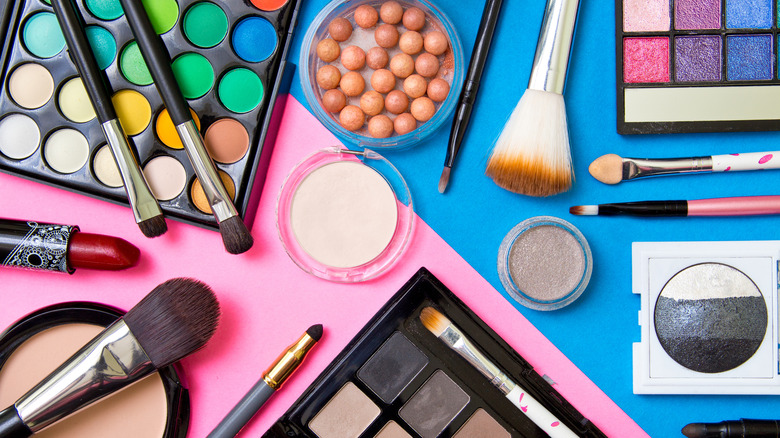One Big Makeup Mistake Has Everything To Do With The Process And Not The Products
We've all been there: after leaving the house in the morning with flawless makeup, you're completely disheartened when you look in the mirror at the end of a long day. Your mascara is running, your eyeliner is smudged, and your blemishes are shining right through your concealer. It happens to even the most experienced makeup wearers, and believe it or not, it's not always about your choice of products.
According to research conducted by Zippia, Americans spend between $244 and $313 on cosmetics, on average, each month — that's a lot of money dedicated to glam. The U.S. is at the top of the list of countries when it comes to spending on beauty products, averaging about $89 billion per year. It seems like brands are always boasting about their latest products, and specifically, their longevity. That being said, what are we supposed to think when our look doesn't make it through a full day?
As it turns out, the issue may not lie in the products themselves but in how we're applying them. Depending on how you layer your makeup, you could be setting yourself up for a lasting look that everyone will envy — or the complete opposite. The order in which you apply your cosmetics is everything if your main focus is the longevity of your appearance. Here is what you need to know about the biggest makeup mistake you might be making during the application process.
Patrick Ta highlights common makeup mistakes
Celebrity makeup artist Patrick Ta recently sat down with Byrdie to dish on everything from his cosmetics line to his favorite trends. However, one solid piece of advice he had to give was about the biggest makeup mistake people don't realize they're making. "I always say start off less and eventually build up," Ta told the publication. "It's harder to take away than it is to add on." In that sense, the makeup application process follows the same rule of thumb for cooking — lean on the side of caution when adding "ingredients." You can always add more later, but it's more difficult (if not impossible, while cooking or baking) to take out what you've already used.
Another common mistake that Ta pointed out in an interview with Flannels is trying to do it all with your look. "I feel like, if you're not good at something, maybe just don't go for it, like try to color in your eyebrows or really contour," Ta told Flannels. "I think less is always more unless you know how to perfect what area of the face you're working on."
As for product selection, Ta explained the importance of choosing makeup that works with your skin type and skin tone while speaking to Flannels. From there, you can begin narrowing down the makeup tools and brushes you need to achieve the look you desire.
How to refine your makeup application technique
Whether you're a pro at applying your makeup or you're still refining your technique, there are a few dos and don'ts you can keep in mind to make the process easier. Makeup artist Janice Kinjo tells WhoWhatWear that primer is a must, even if longevity isn't your main concern. "Primer helps hold makeup longer by creating a barrier between skin and makeup," Kinjo told the outlet. "Without a primer, your makeup will eventually melt into your skin, and you will have to touch up more often throughout the day. Best advice: Don't skip the primer." Primers designed for certain areas of your face (think eyelids and lips) should also be used before applying makeup.
If you struggle with blemishes, don't underestimate the power of using a green-tinted concealer. It may sound strange, but the color can cancel out the redness of your blemish before you add a skin-tone-colored concealer.
Finally, don't forget to seal your look with a setting spray and finishing powder. A translucent finishing powder can also help you create a more matte appearance, which you may want if you have naturally oily skin. By taking just a couple of these tips into account, you can feel confident about your makeup every time you head out the door.


